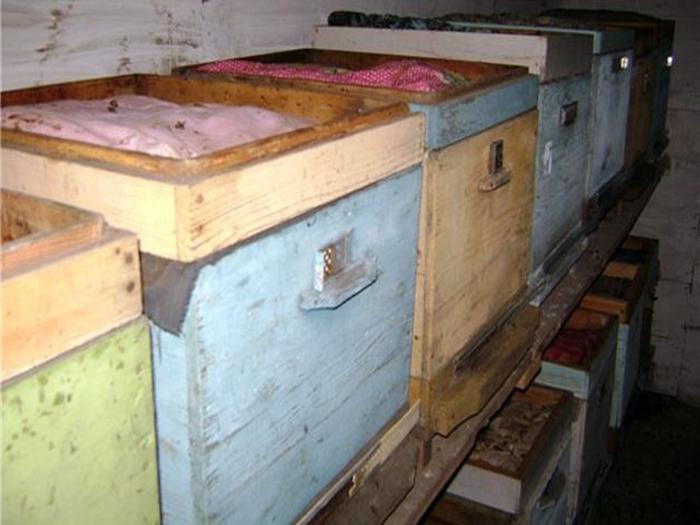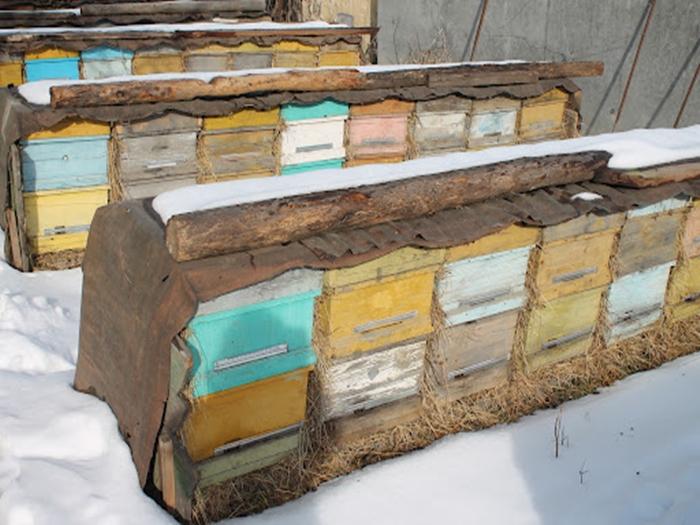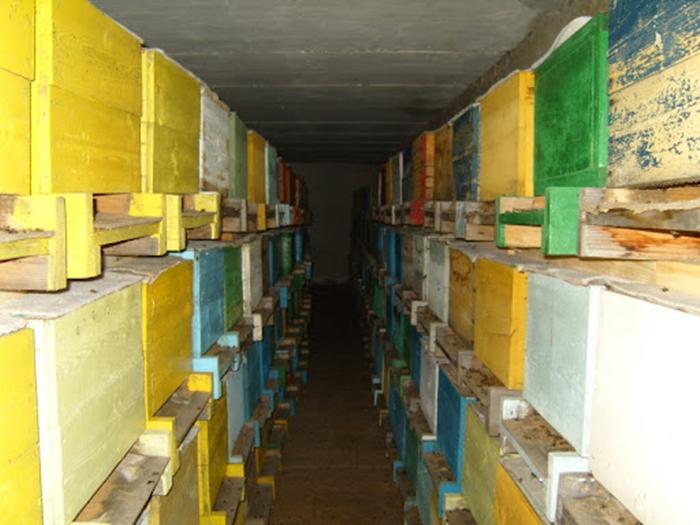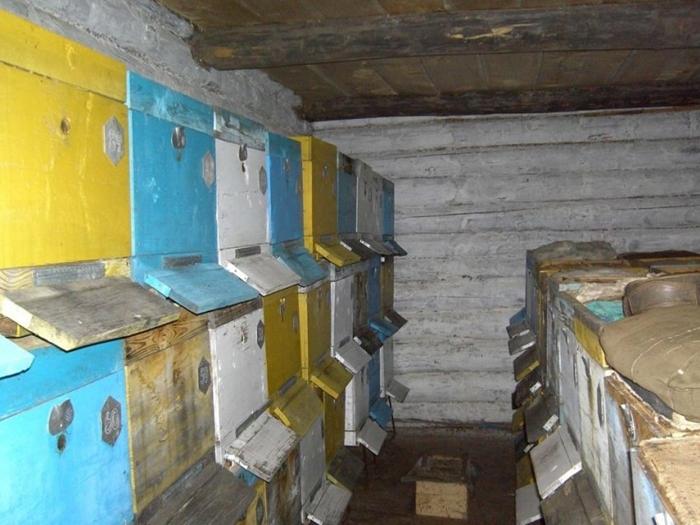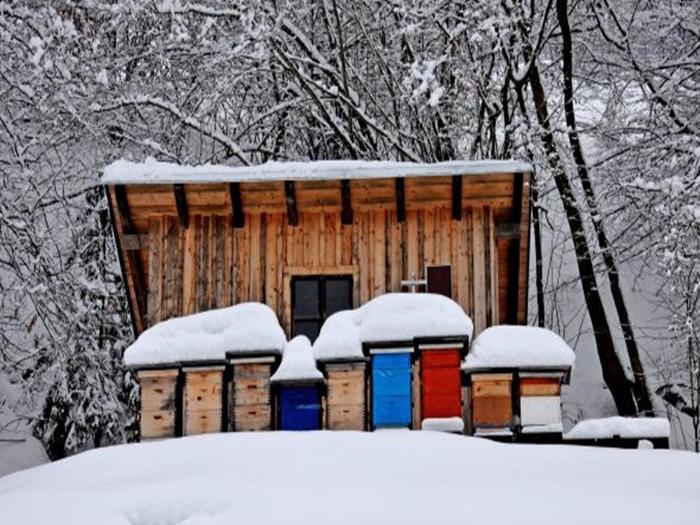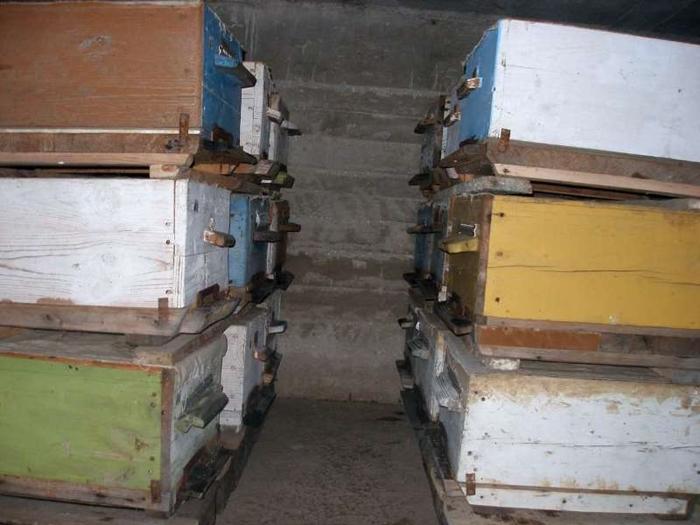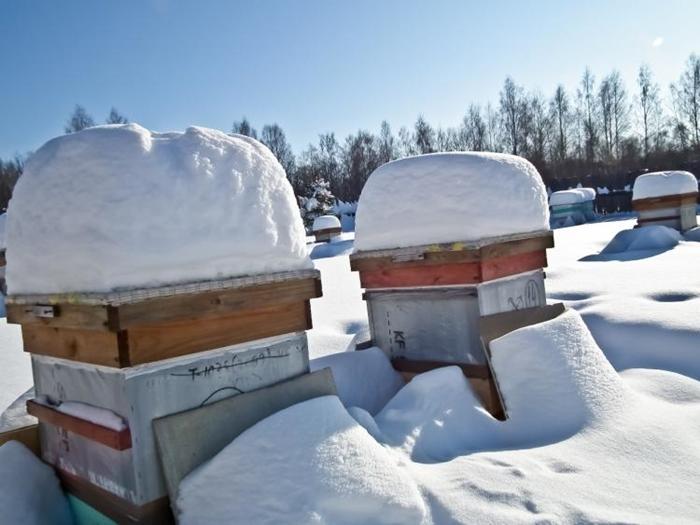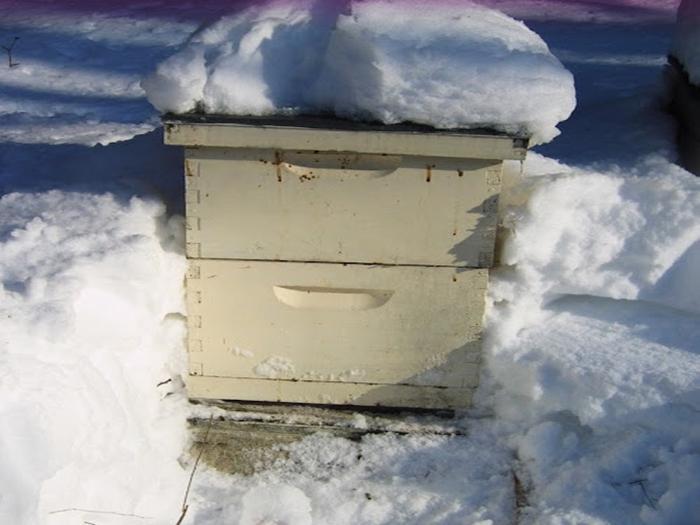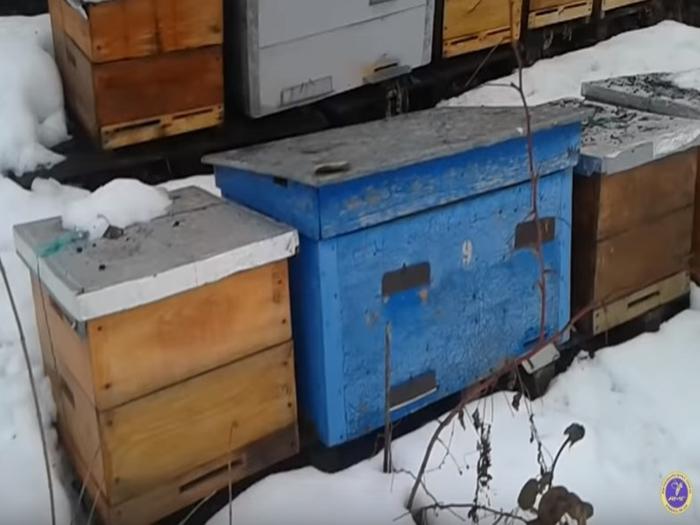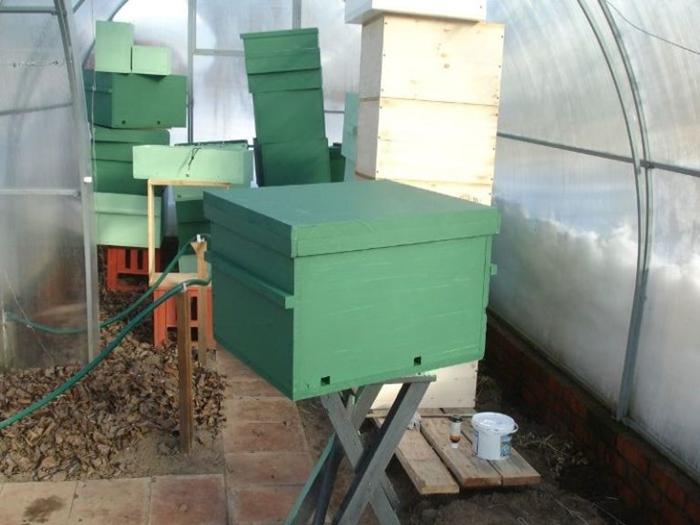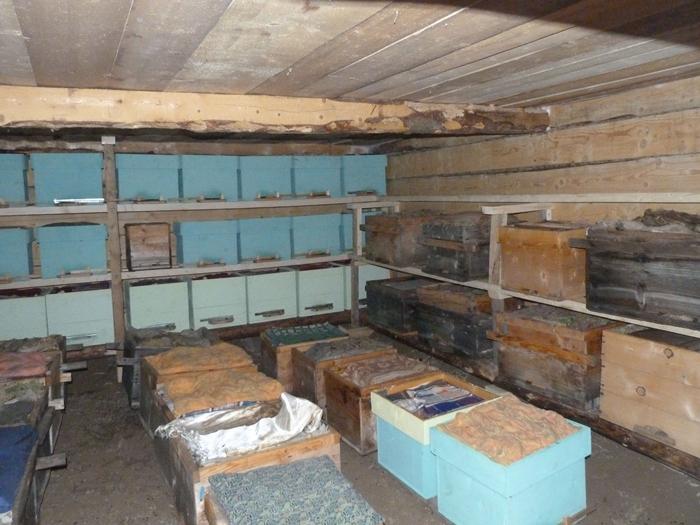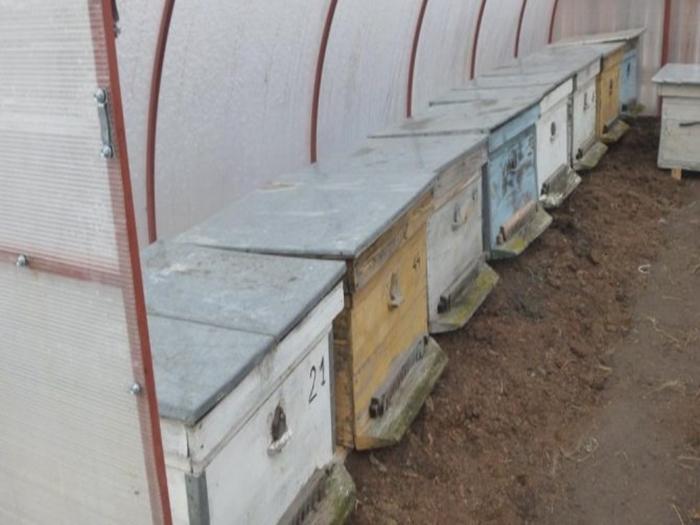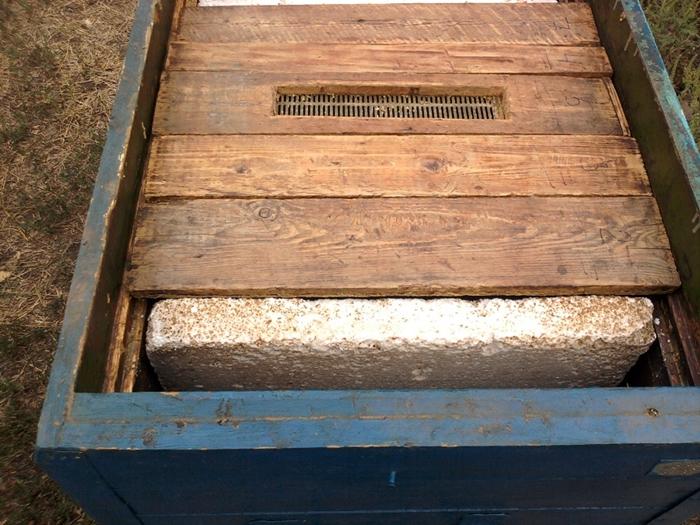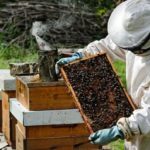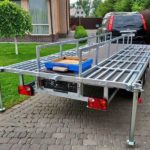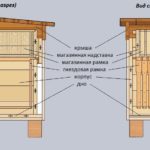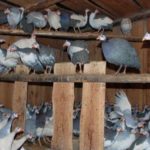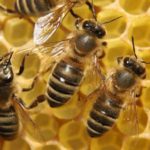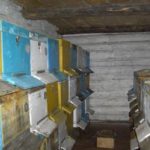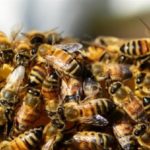Bees have long provided humans with honey and other useful products. In return, people take care of insects, creating optimal living conditions for them. In regions with severe frosty winters, beekeepers need not only hives, but also premises for overwintering bees, since without additional protection the hives will not withstand a significant drop in temperature, and bee colonies will die.
What is it used for?
A winter house is a room for installing hives.Omshaniks (specially built storage for hives) are used as a winter hut if the beekeeper has many bee families. An insulated utility building (barn or garage) is suitable for storing a small number of hives. It should be quiet, high humidity and drafts should not be allowed.
Bee houses are installed in several rows. Insects are provided with high-quality food, ventilation, constant room temperature, peace and quiet. In such conditions, bees winter well, colonies remain healthy and strong.
Advantages of use
When storing indoors during the winter, insects are safer; the presence of an omshanik gives the beekeeper many advantages:
- families do not suffer from changes in temperature and humidity;
- bees consume less food without spending additional energy on heating the club;
- are not attacked by birds;
- hives last longer;
- there is an opportunity, if necessary, to inspect and feed insects;
No extraneous noises penetrate into the omshanik, even weak families overwinter quietly, and the percentage of insect losses after wintering is significantly lower.
Popular types
There are underground, semi-underground and above-ground types of omshaniks. The choice depends on the number of families in the apiary, the type of soil on the site, and the level of groundwater. Many beekeepers erect above-ground buildings, during the warm season using them as utility rooms and for storing equipment.
Experienced beekeepers with a large number of families prefer underground winter huts. The main part of such a room is located below ground level (at a depth of 3 meters); the roof of the building is located on the surface. In such a shelter, constant temperature and humidity are maintained and no additional insulation is required.
To equip underground omshanik, deep groundwater is required (more than 4 meters). Such premises are more labor-intensive and expensive to construct, but with the right equipment they will last a long time and fully recoup the investment. The disadvantage is that it is not very convenient to remove the hives in the spring and install bee houses for the winter.
Semi-underground omshans are built if the groundwater is shallow on the site. The building goes underground for 1.5 meters, the rest is above ground level. The windows available in such a winter hut allow you to save on electricity. The building needs additional insulation. Clay, expanded clay, sheets of foam plastic or expanded polystyrene are used as insulation.
Above-ground premises require high-quality insulation and sound insulation. In semi-underground and above-ground winter storage rooms for hives, it is necessary to periodically monitor the temperature and humidity.
Important: hives should not be placed in the basement where supplies of vegetables and fruits are stored. The aroma of apples will disturb insects. When storing vegetables, there is a high probability of mold and increased humidity in the room. Winter huts should not be located near residential buildings and workshops; the noise will disturb insects.
Construction requirements
A wintering room for insects should not be built in lowlands, near bodies of water; it should be protected from the wind and located next to the apiary. First you need to decide on the type of omshanik. At the same time, its area (depending on the number of families), the type of soil on the site, and the level of groundwater are taken into account.
The area of the room is calculated depending on the number of hives and the possible expansion of the apiary. For a single-walled hive, 0.5-0.6 cubic meters are required, for a double-walled hive - 0.8-0.9 meters.
Ventilation
It is necessary for the flow of fresh air, removal of excess heat and humidity. Damp indoor air causes souring of honey in hives and the appearance of mold in bee houses. If the honey is too dry, it quickly crystallizes and the bees starve.
Supply and exhaust ventilation is usually installed. One pipe reaches almost to the floor of the house, the other is mounted under the ceiling. Through the first pipe, warm air rises and is removed from the room, the second serves to bring in fresh air.
Fans with variable speed should be installed in them to be able to control the process. A rectangular screen is installed under the upper ceiling pipe; in this case, air enters different sides of the room and quickly warms up.
Less commonly used is 1 pipe, which reaches almost to the floor and is discharged through the roof. The pipe on the roof is additionally insulated.
It delivers fresh air into the room and removes heated air from the room. Equipped with a valve to regulate the room temperature.
Temperature
Sudden temperature fluctuations in the beehouse are not allowed. It is maintained at a level from 0 to +4 °C.
Humidity
Damp indoor air causes souring of honey in hives and the appearance of mold in bee houses. If the honey is too dry, it quickly crystallizes and the bees starve.
Required tools and materials
First, the type of omshanik and the amount of materials needed are determined. For construction you can use wood, stone, brick, adobe. The walls can be plastered and whitewashed with lime, covered with wood, clapboard.For the foundation you will need concrete slabs, crushed stone, sand. To make shelving, you will need timber, metal corners, screws, and self-tapping screws. You should take care in advance about the insulation and pipes for installing ventilation.
Construction and carpentry skills are required for high-quality construction of a winter road. If you have no previous experience in constructing buildings, it is better to entrust the construction of a beehouse to professionals.
Making omshanik with your own hands
To build an underground type omshanik you will need:
- dig a pit about 3 meters deep, the length and width are determined by the area of the room;
- level the bottom and walls of the pit;
- erect formwork and fill it with concrete;
- after complete drying, lay brickwork around the perimeter;
- lay pipes or a channel on top of the last row of brickwork; to strengthen the structure, they are tied together;
- lay boards on top, leaving holes for ventilation pipes and doors;
- the boards are covered with a separating film, reinforcement is mounted on top and filled with concrete;
- after drying, a layer of waterproofing (film, roofing felt) is laid;
- a layer of soil is laid on the roof to level it with the ground level;
- stairs, doors and ventilation are installed;
- racks for hives are installed.
Sand is poured onto the floor. The doors must be tight so that cold air does not penetrate through them. The ventilation holes are covered with mesh to protect against rodents.
Wintering
This is a crucial period for the beekeeper. It is necessary to check the hives and provide insects with food.
Preparation
Omshanik must be ventilated and, if necessary, the walls must be whitewashed with lime to destroy mold. Check the strength of the racks and the proper functioning of the ventilation.Inspect the premises, remove rodent nests, check the roof and fix leaks.
When to bring in hives?
Bee houses are installed for wintering after the onset of cold weather. This occurs no earlier than the last ten days of October. The entrances are closed and the hives are brought into the room. Weak families are placed on the upper tier. After installing the hives, the doors are left open for 2-3 hours to equalize the temperature.
Then the doors are closed. The upper entrances are opened after 2-3 days, when the bee colonies have completely calmed down. Several thermometers are installed in the omshanik to control the temperature. It is regulated by valves on the ventilation pipes.
The equipment of the omsha farm will allow the insects to have a good winter, and the beekeeper to get strong, healthy colonies in the spring. The choice of type of room depends on the beekeeper; the main thing is that the bees feel comfortable in the winter hut.


